A Score-Guided Regularization Strategy-Based Unsupervised Structural Damage Detection Method
Abstract
:1. Introduction
- (1)
- The proposed method requires contaminated data as training data, which is more realistic than current unsupervised algorithms that solely employ undamaged data.
- (2)
- The model can learn more representative information using a score-guided regularization technique. The difference between undamaged and damaged data is widened by scoring the input data, allowing undamaged and damaged data to be distinguished. The model takes an anomaly score as output. Proposed method selects the anomaly score, that is, the score of the input sample, as the damage indicators, which does not require relevant background knowledge or pre-defined, but is directly output in an end-to-end manner.
- (3)
- Using multi-task learning to simplify the hyperparameter tuning procedure increases the model’s performance and adaptability.
2. Proposed Method
2.1. Model
2.1.1. Extract Features Using Auto-Encoder
2.1.2. Introducing the Score-Guided Regularization Strategy to Expand Anomaly Score Differences
2.1.3. Tuning Parameters Using Multi-Task Learning
2.1.4. Data Generation
2.2. Algorithm
| Algorithm 1. |
| Input: , Output: |
, |
3. Experiment
3.1. Verification on the Qatar University Grandstand Simulator
3.1.1. Qatar University Grandstand Simulator
3.1.2. Experiment Setup
3.1.3. Discussions
3.2. Verification on Experimental Phase II of the SHM Benchmark Data
3.2.1. Experimental Phase II of the SHM Benchmark Data
3.2.2. Experiment Setup
3.2.3. Discussions
4. Conclusions
- (1)
- The proposed method generates a separate model for each monitoring point, so even if there are few monitoring points available in the real-case structure monitoring, the method can be well applied.
- (2)
- The proposed method outputs anomaly scores in an end-to-end manner without requiring prior knowledge to define various indicators in advance, making the model more convenient to apply to different scenarios.
- (3)
- The proposed method uses contaminated data for training, which is more suitable for actual structural monitoring scenarios and provides higher applicability.
Author Contributions
Funding
Institutional Review Board Statement
Informed Consent Statement
Data Availability Statement
Conflicts of Interest
References
- Farrar, C.R.; Worden, K. Structural Health Monitoring: A Machine Learning Perspective, 1st ed.; John Wiley & Sons: Chichester, UK, 2012; pp. 16–239. [Google Scholar]
- Barthorpe, R.J. On Model- and Data-Based Approaches to Structural Health Monitoring. Ph.D. Thesis, University of Sheffield, Sheffield, UK, 2014. [Google Scholar]
- Alcover, I.F. Data-Based Models for Assessment and Life Prediction of Monitored Civil Infrastructure Assets. Ph.D. Thesis, University of Surrey, Guildford, UK, 2014. [Google Scholar]
- Mohsen, A.; Armin, D.E.; Gokhan, P. Data-driven structural health monitoring and damage detection through deep learning: State-of-the-art review. Sensors 2020, 20, 2778. [Google Scholar]
- Abdeljaber, O.; Avci, O.; Kiranyaz, M.S.; Boashash, B.; Sodano, H.; Inman, D.J. 1-D CNNs for structural damage detection: Verification on a structural health monitoring benchmark data. Neurocomputing 2018, 275, 1308–1317. [Google Scholar] [CrossRef]
- Avci, O.; Abdeljaber, O.; Kiranyaz, M.S.; Inman, D. Structural Damage Detection in Real Time: Implementation of 1D Convolutional Neural Networks for SHM Applications. In Structural Health Monitoring & Damage Detection, 7th ed.; Springer: Berlin, Germany, 2017; pp. 49–54. [Google Scholar]
- Sergio, R.; Angelo, C.; Valeria, L.; Uva, G. Machine-learning based vulnerability analysis of existing buildings. Autom. Constr. 2021, 132, 103936. [Google Scholar]
- Sanayei, M.; Khaloo, A.; Gul, M.; Catbas, F.N. Automated finite element model updating of a scale bridge model using measured static and modal test data. Eng. Struct. 2015, 102, 66–79. [Google Scholar] [CrossRef]
- Ding, X.M.; Li, Y.H.; Belatreche, A.; Maguire, L. An experimental evaluation of novelty detection methods. Neurocomputing 2014, 135, 313–327. [Google Scholar] [CrossRef]
- Sarmadi, H.; Karamodin, A. A novel anomaly detection method based on adaptive Mahalanobis-squared distance and one-class kNN rule for structural health monitoring under environmental effects. Mech. Syst. Signal Process. 2019, 140, 106495. [Google Scholar] [CrossRef]
- Da Silva, S.; Júnior, M.D.; Junior, V.L.; Brennan, M.J. Structural damage detection by fuzzy clustering. Mech. Syst. Signal Process. 2008, 22, 1636–1649. [Google Scholar] [CrossRef]
- Rafiei, M.H.; Adeli, H. A novel unsupervised deep learning model for global and local health condition assessment of structures. Eng. Struct. 2018, 156, 598–607. [Google Scholar] [CrossRef]
- Long, J.; Buyukozturk, O. Automated structural damage detection using one-class machine learning. In Dynamics of Civil Structures, 4th ed; Springer: Cham, Germany, 2014; pp. 117–128. [Google Scholar]
- Wang, Z.; Cha, Y.J. Unsupervised deep learning approach using a deep auto-encoder with a one-class support vector machine to detect structural damage. Struct. Health Monit. 2020, 20, 406–425. [Google Scholar] [CrossRef]
- Diez, A.; Khoa, N.L.D.; Alamdari, M.M.; Wang, Y.; Chen, F.; Runcie, P. A clustering approach for structural health monitoring on bridges. J. Civ. Struct. Health Monit. 2016, 6, 429–445. [Google Scholar] [CrossRef] [Green Version]
- Cha, Y.-J.; Wang, Z.L. Unsupervised novelty detection–based structural damage localization using a density peaks-based fast clustering algorithm. Struct. Health Monit. 2017, 17, 313–324. [Google Scholar] [CrossRef]
- Fan, W.; Qiao, P. Vibration-based Damage Identification Methods: A Review and Comparative Study. Struct. Health Monit. 2011, 10, 83–111. [Google Scholar] [CrossRef]
- Cao, M.S.; Sha, G.G.; Gao, Y.F.; Ostachowicz, W. Structural damage identification using damping: A compendium of uses and features. Smart Mater. Struct. 2017, 26, 043001. [Google Scholar] [CrossRef]
- Barman, S.; Mishra, M.; Maiti, D.; Maity, D. Vibration-based damage detection of structures employing Bayesian data fusion coupled with TLBO optimization algorithm. Struct. Multidiscip. Optim. 2021, 64, 2243–2266. [Google Scholar] [CrossRef]
- Pathirage, C.S.N.; Li, J.; Li, L.; Hao, H.; Liu, W.; Ni, P. Structural damage identification based on autoencoder neural networks and deeplearning. Eng. Struct. 2018, 172, 13–28. [Google Scholar] [CrossRef]
- Rumelhart, D.E.; Hinton, G.E.; Williams, R.J. Learning representations by back-propagating errors. Nature 1986, 323, 533–536. [Google Scholar] [CrossRef]
- Bourlard, H.; Kamp, Y. Auto-association by multilayer perceptrons and singular value decomposition. Biol. Cybern. 1988, 59, 291–294. [Google Scholar] [CrossRef]
- Huang, Z.Y.; Zhang, B.H.; Hu, G.Q.; Li, L.; Xu, Y.; Jin, Y. Enhancing Unsupervised Anomaly Detection with Score-Guided Network. arXiv 2021, arXiv:2109.04684. [Google Scholar]
- Caruana, R. Multitask learning. Mach. Learn. 1997, 28, 41–75. [Google Scholar] [CrossRef]
- Baxter, J. A model of inductive bias learning. J. Artif. Intell. Res. 2000, 12, 149–198. [Google Scholar] [CrossRef]
- Cipolla, R.; Gal, Y.; Kendall, A. Multi-task Learning Using Uncertainty to Weigh Losses for Scene Geometry and Semantics. In Proceedings of the 2018 IEEE/CVF Conference on Computer Vision and Pattern Recognition, Salt Lake City, UT, USA, 18–23 June 2018; pp. 7482–7491. [Google Scholar]
- Abdeljaber, O.; Avci, O.; Kiranyaz, S.; Gabbouj, M.; Inman, D.J. Real-time vibration-based structural damage detection using one-dimensional convolutional neural networks. J. Sound Vib. 2017, 388, 154–170. [Google Scholar] [CrossRef]
- Fawcett, T. ROC Graphs: Notes and Practical Considerations for Researchers; Kluwer Academic Publishers: Dordrecht, The Netherlands, 2003; pp. 1–38. [Google Scholar]
- Dyke, S.J.; Bernal, D.; Beck, J.; Ventura, C. Experimental Phase II of the Structural Health Monitoring Benchmark Problem. In Proceedings of the 16th ASCE Engineering Mechanics Conference, Seattle, WA, USA, 16–18 July 2003. [Google Scholar]
- Sarmadi, H.; Entezami, A.; Khorram, M.D. Energy-based damage localization under ambient vibration and non-stationary signals by ensemble empirical mode decomposition and Mahalanobis-squared distance. J. Vib. Control 2019, 26, 1012–1027. [Google Scholar] [CrossRef]
- Entezami, A.; Shariatmadar, H. Damage localization under ambient excitations and non-stationary vibration signals by a new hybrid algorithm for feature extraction and multivariate distance correlation methods. Struct. Health Monit. 2018, 18, 347–375. [Google Scholar] [CrossRef]



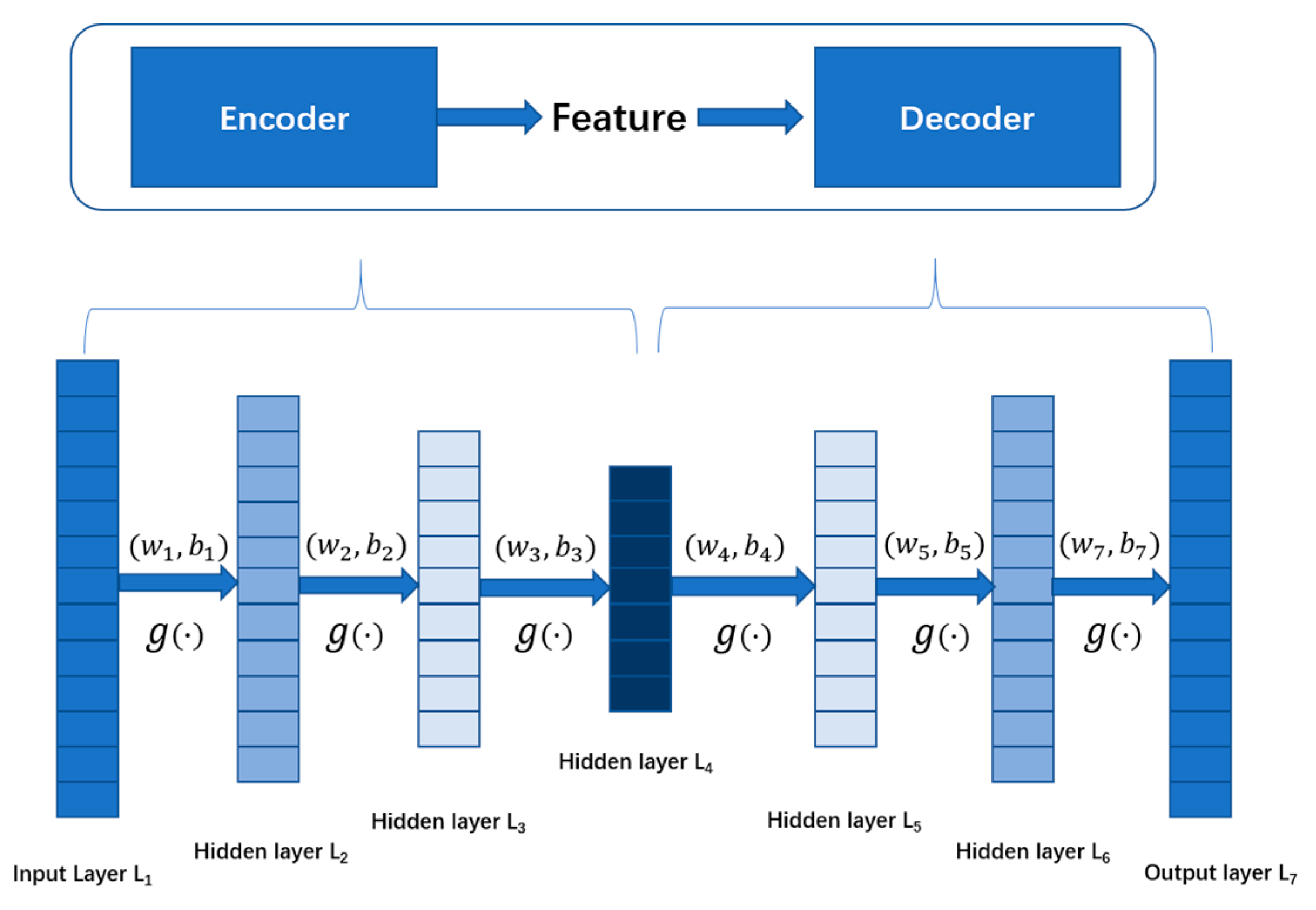
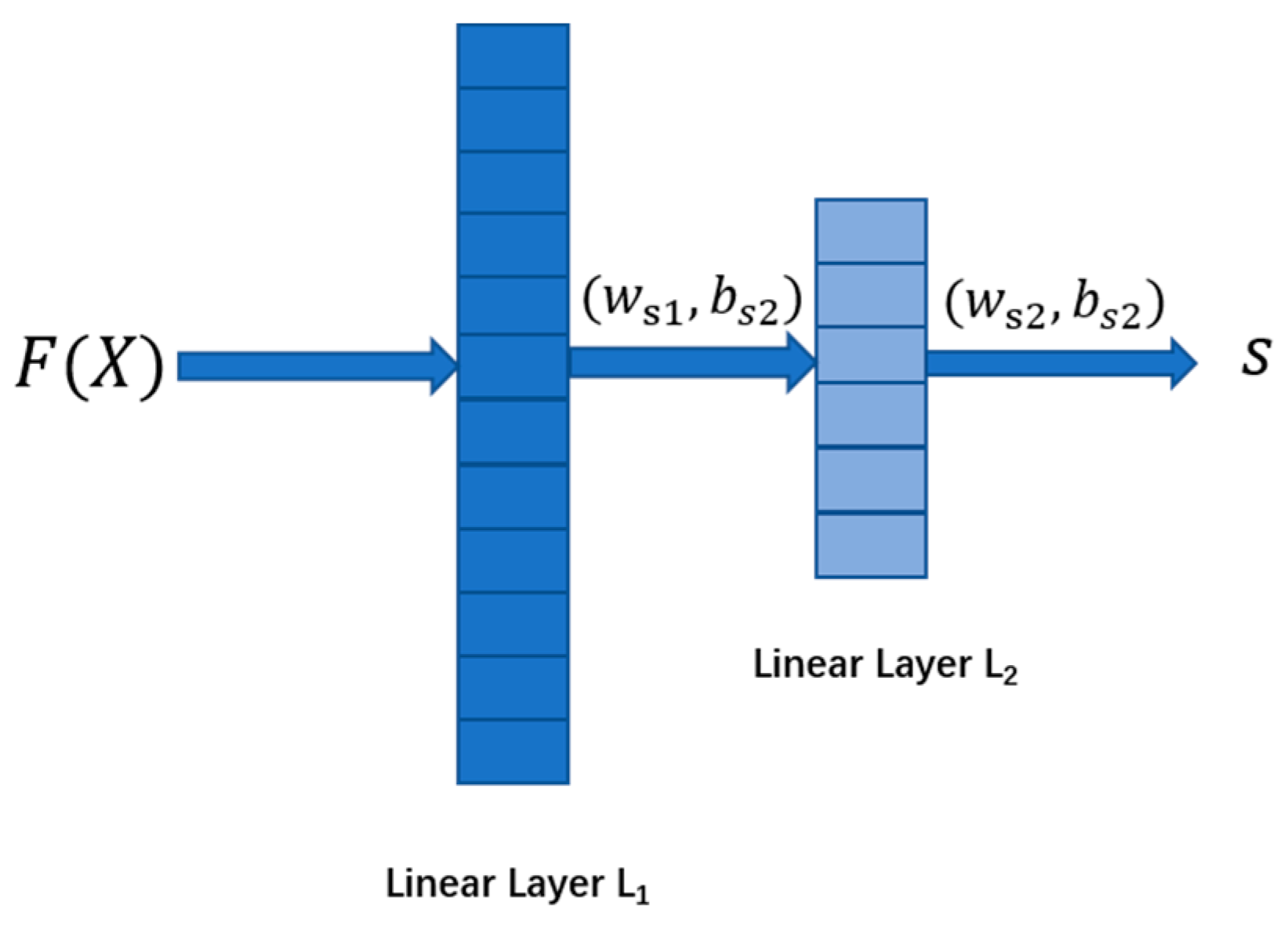



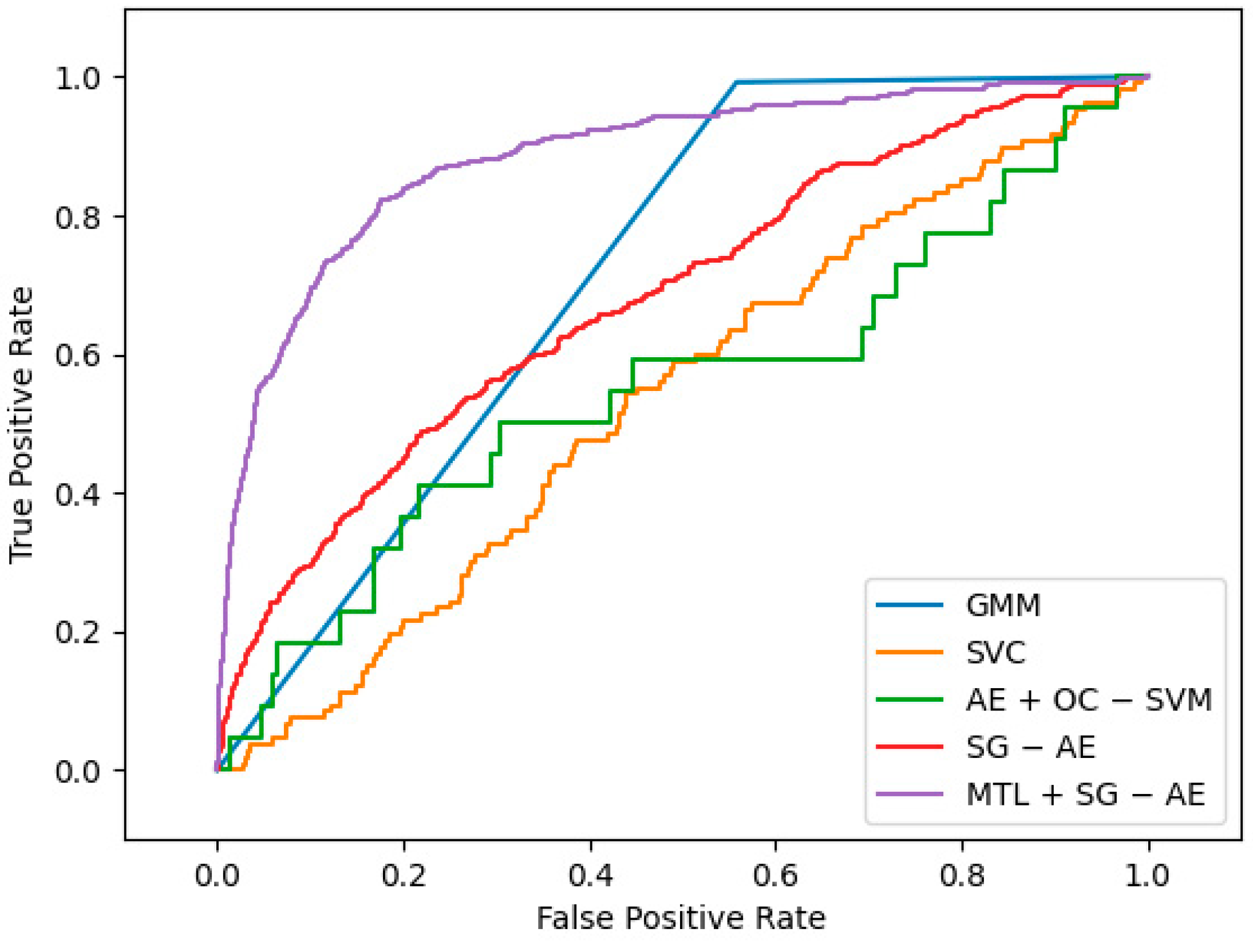
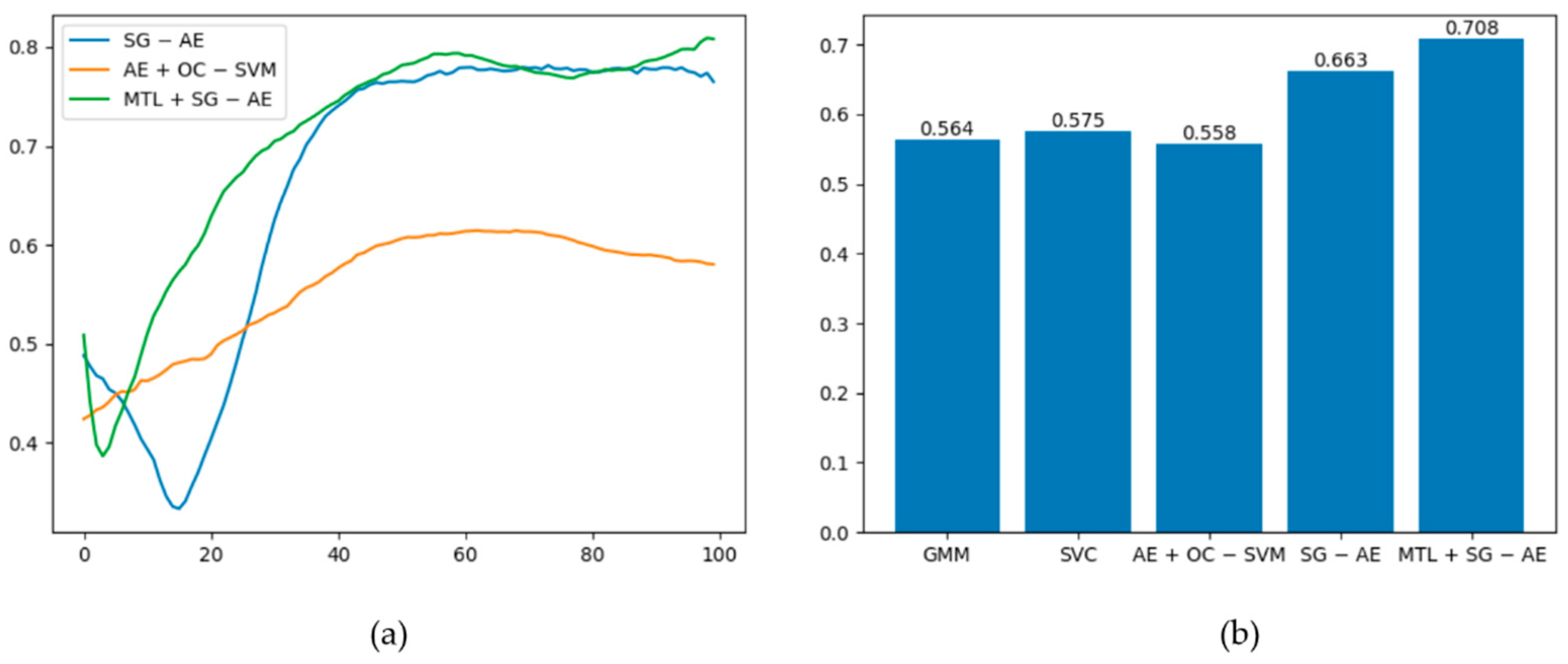
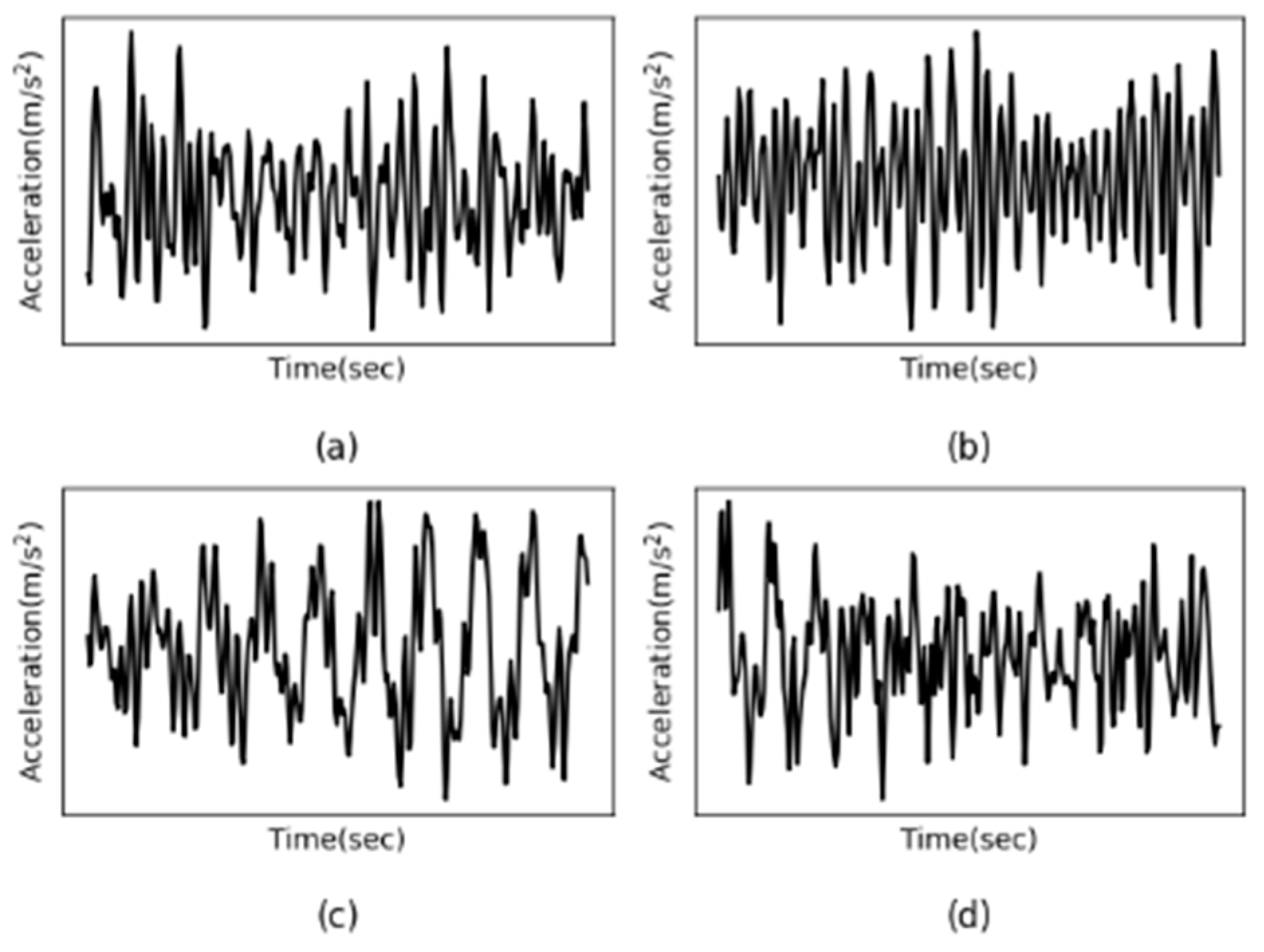
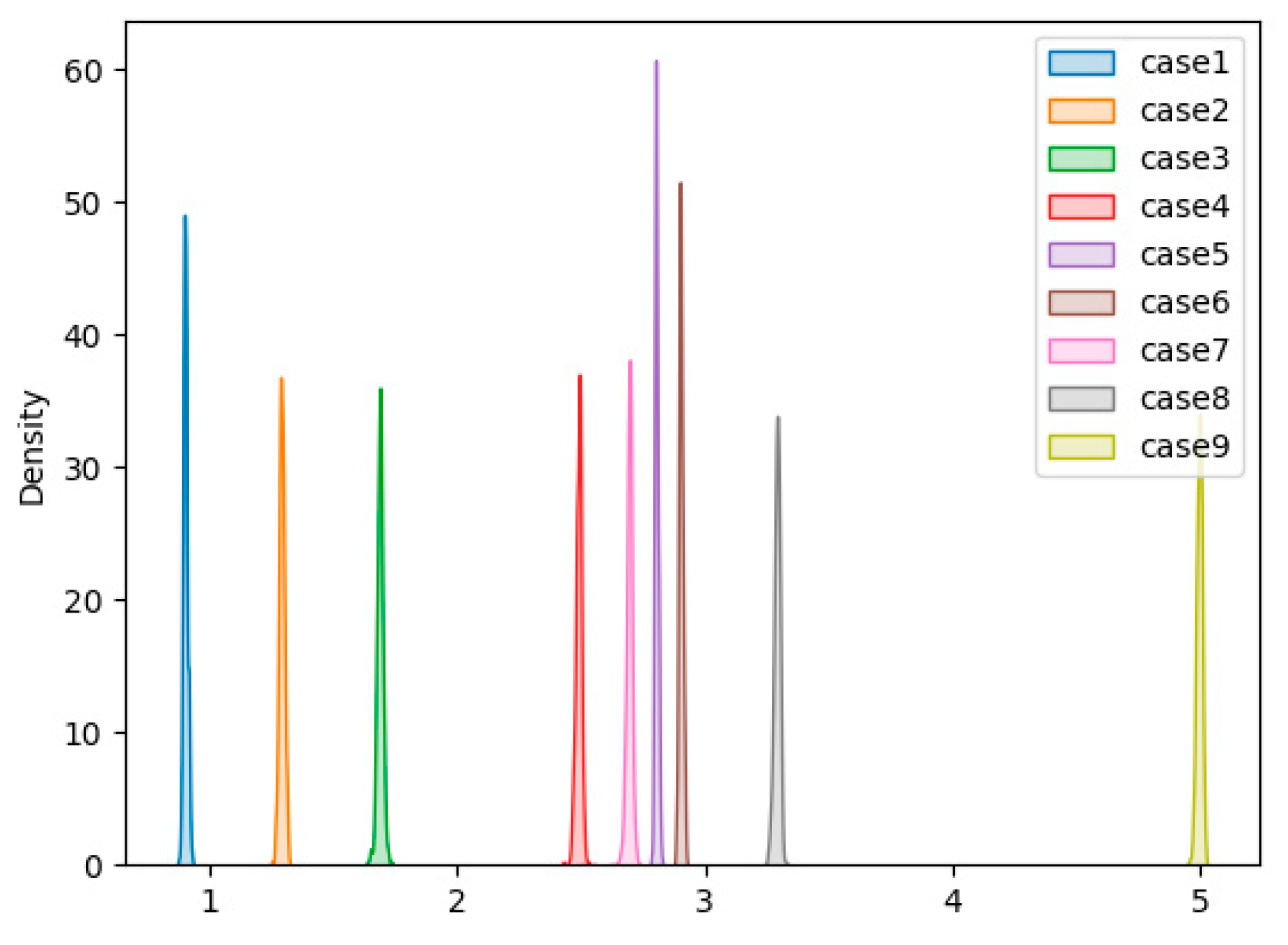


| ID | Undamaged | Damaged | ID | Undamaged | Damaged | ID | Undamaged | Damaged |
|---|---|---|---|---|---|---|---|---|
| 1 | 0.384 | 5.785 | 11 | 0.802 | 4.108 | 21 | 0.893 | 4.361 |
| 2 | 0.786 | 3.752 | 12 | 0.819 | 3.887 | 22 | 0.590 | 6.008 |
| 3 | 0.882 | 7.248 | 13 | 0.668 | 3.779 | 23 | 0.802 | 3.818 |
| 4 | 0.563 | 4.5211 | 14 | 0.756 | 5.063 | 24 | 0.817 | 1.674 |
| 5 | 0.219 | 7.104 | 15 | 0.999 | 3.854 | 25 | 1.059 | 3.015 |
| 6 | 0.905 | 4.124 | 16 | 0.860 | 4.486 | 26 | 0.507 | 2.322 |
| 7 | 0.969 | 1.955 | 17 | 0.986 | 0.081 | 27 | 0.490 | 5.482 |
| 8 | 0.330 | 4.820 | 18 | 1.066 | 2.937 | 28 | 0.320 | 4.509 |
| 9 | 0.858 | 4.126 | 19 | 0.789 | 3.314 | 29 | 0.480 | 1.041 |
| 10 | 0.766 | 3.177 | 20 | 0.874 | 3.786 | 30 | 1.300 | 0.097 |
| Structural Case | Description |
|---|---|
| 1 | Undamaged. |
| 2 | On the southeast corner, a brace on the first floor is removed. |
| 3 | Braces on the first and fourth levels are removed on the southeast corner. |
| 4 | On the southeast corner, braces on all floors are removed. |
| 5 | All braces on the east are unfastened. |
| 6 | Case 5 + braces of the second-floor on the north face are removed. |
| 7 | All braces are separated. |
| 8 | Case 7 + loosened bolts at ends of the beam on the east face, north side, on the first and second levels. |
| 9 | Case 7 + loosened bolts at ends of the beam on the east face, north side, on all levels. |
| ID | Location | Orientation | Case1 | Case2 | Case3 | Case4 | Case5 | Case6 | Case7 | Case8 | Case9 |
|---|---|---|---|---|---|---|---|---|---|---|---|
| 1 | 1F/West | N/S | 1.080 | 1.533 | 1.823 | 2.684 | 2.733 | 2.822 | 2.722 | 3.464 | 5.179 |
| 2 | 1F/Center | E/W | 0.108 | 0.106 | 0.104 | 0.096 | 0.970 | 0.980 | 0.111 | 0.113 | 0.113 |
| 3 | 1F/East | N/S | 1.07 | 1.151 | 1.392 | 1.695 | 1.878 | 1.967 | 2.168 | 3.313 | 4.601 |
| 4 | 2F/West | N/S | 1.080 | 1.217 | 1.727 | 1.789 | 1.842 | 1.878 | 2.558 | 3.288 | 5.438 |
| 5 | 2F/Center | E/W | −0.299 | −0.289 | −0.296 | −0.306 | −0.303 | −0.302 | −0.291 | −0.295 | −0.291 |
| 6 | 2F/East | N/S | 1.132 | 1.820 | 1.847 | 1.858 | 1.892 | 1.911 | 2.984 | 3.782 | 5.475 |
| 7 | 3F/West | N/S | 1.135 | 1.411 | 1.572 | 1.882 | 2.008 | 2.414 | 2.469 | 3.147 | 4.407 |
| 8 | 3F/Center | E/W | 1.120 | 2.189 | 2.226 | 2.289 | 2.324 | 2.345 | 4.068 | 4.364 | 4.509 |
| 9 | 3F/East | N/S | 1.142 | 1.534 | 1.668 | 1.830 | 1.853 | 2.332 | 3.155 | 3.765 | 4.037 |
| 10 | 4F/West | N/S | 1.090 | 1.406 | 1.756 | 1.779 | 2.094 | 2.253 | 2.242 | 2.579 | 4.422 |
| 11 | 4F/Center | E/W | 0.185 | 0.174 | 0.167 | 0.175 | 0.175 | 0.176 | 0.182 | 0.180 | 0.179 |
| 12 | 4F/East | N/S | 1.042 | 1.548 | 1.594 | 1.705 | 2.383 | 2.733 | 3.048 | 3.767 | 5.790 |
| Score | 0.824 | 1.150 | 1.298 | 1.456 | 1.654 | 1.792 | 2.118 | 2.622 | 3.655 |
Publisher’s Note: MDPI stays neutral with regard to jurisdictional claims in published maps and institutional affiliations. |
© 2022 by the authors. Licensee MDPI, Basel, Switzerland. This article is an open access article distributed under the terms and conditions of the Creative Commons Attribution (CC BY) license (https://creativecommons.org/licenses/by/4.0/).
Share and Cite
Que, Y.; Zhong, S.; Chen, K. A Score-Guided Regularization Strategy-Based Unsupervised Structural Damage Detection Method. Appl. Sci. 2022, 12, 4887. https://doi.org/10.3390/app12104887
Que Y, Zhong S, Chen K. A Score-Guided Regularization Strategy-Based Unsupervised Structural Damage Detection Method. Applied Sciences. 2022; 12(10):4887. https://doi.org/10.3390/app12104887
Chicago/Turabian StyleQue, Yunfei, Shangping Zhong, and Kaizhi Chen. 2022. "A Score-Guided Regularization Strategy-Based Unsupervised Structural Damage Detection Method" Applied Sciences 12, no. 10: 4887. https://doi.org/10.3390/app12104887
APA StyleQue, Y., Zhong, S., & Chen, K. (2022). A Score-Guided Regularization Strategy-Based Unsupervised Structural Damage Detection Method. Applied Sciences, 12(10), 4887. https://doi.org/10.3390/app12104887





